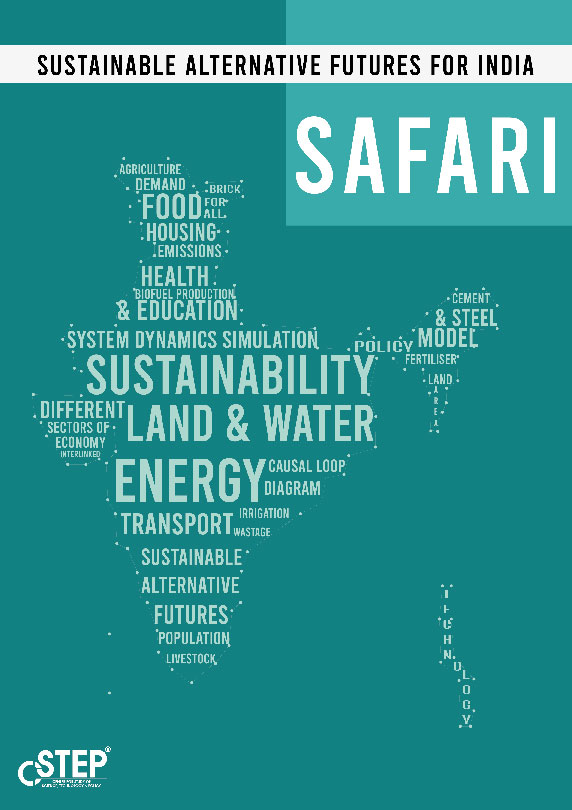Climate change mitigation involves strategies aimed at decreasing greenhouse gas emissions, promoting renewable energy sources, improving energy efficiency, and implementing sustainable practices. CSTEP focuses on building models to simulate India's future across sectors, such as transport, industries, buildings, agriculture, and forestry, to find interventions required to achieve a sustainable and secure future. Our work also involves the study of certain themes that cut across sectors (quality of life and development vs climate action, water and land demands for agriculture vs power, etc).
CSTEP's SAFARI model: Balancing development with climate action requires a good understanding of the interactions between sectors, natural resource systems, and environmental externalities. The Climate Change Mitigation at CSTEP has undertaken a modelling study with the aim to provide such an understanding and help create scenarios for low-carbon development through the use of an interactive simulation tool called Sustainable Alternative Futures for India (SAFARI). You can access the tool here.
SAFARI estimates the energy, emissions, and resources implications of achieving developmental goals such as food, housing, healthcare, education, power for all, and transport up to 2050. The user interface allows you to explore these implications as well as the trade-offs between them. Using SAFARI, you can create integrated scenarios across sectors and test out the impact of policy choices on energy, emissions, and resources. Ultimately, we hope that this tool can be used to provide insights into developing and tracking India's long-term strategy (LTS) in line with the Paris Agreement. For more information, please contact safari@cstep.in



COP28 and India: Phased phase-out or no phase-out?
Most high-income countries, particularly the United States, Australia, and the United Kingdom, have opposed the removal of ‘fossil fuel phase-out’ from the COP28 Global Stocktake (GST) text. In reality, these countries are opposing a ‘just and equitable phase-out’, wherein they would be required to lead the way in phasing out fossil fuels. These countries still rely on fossil fuels to meet most of their primary energy demands and continue to expand their oil and gas production.
Roundtable Discussion: Net-Zero Scenarios for India’s Buildings Sector
CSTEP conducted a closed-door roundtable discussion on ‘Net-Zero Scenarios for India’s Buildings Sector’ on 18 December 2023 in Bengaluru. The buildings sector directly and indirectly contributes to almost 30% of India’s total GHG emissions.
Making sense of carbon markets in India
As the global community once again converges at the Conference of the Parties (COP), the pivotal role of carbon markets in achieving the Paris Agreement's ambitious goal of limiting warming to 1.5 degrees Celsius takes center stage.
Tashina quoted on the implications of the adaptation finance gap in an article in Climate Factchecks
Viewing India’s Net-Zero Ambition Through the Lens of Polysilicon
As India dons the role of a solar superpower, a crucial hurdle in the country’s journey to self-reliance in this sector is the availability of the key raw material—polysilicon. It is a semiconductor that helps convert photons to electricity, thereby forming the brick of solar cells. The production of polysilicon—an energy-intensive material—requires copious amounts of high-quality silicon. While silicon is abundantly found in India and the rest of the world, competition for the mineral is extremely high.